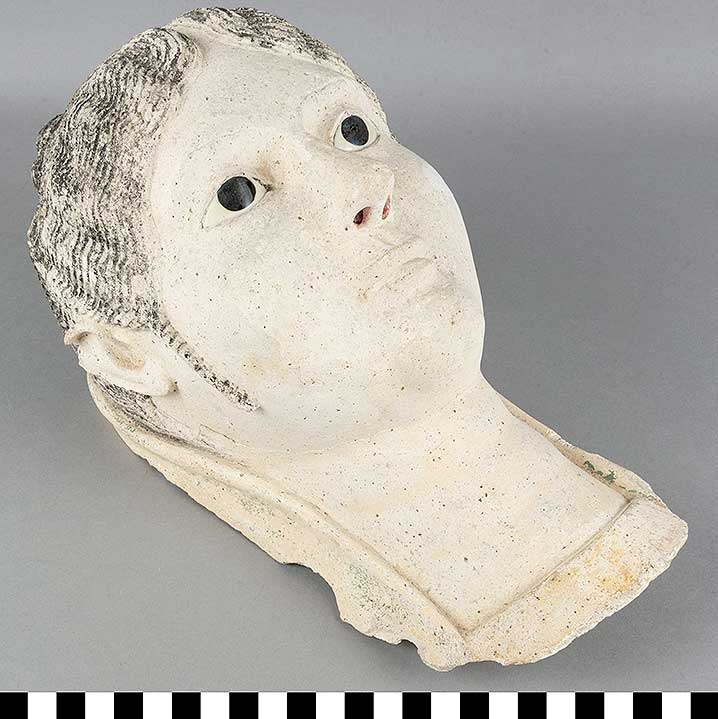Plaster Burial Portrait
1926.02.0234
Detailed Images
Basic Information
| Artifact Identification | Plaster Burial Portrait (1926.02.0234) |
|---|---|
| Classification/ Nomenclature |
|
| Artist/Maker | Unknown |
| Geographic Location | |
| Period | Roman Empire, Antonine |
| Date | 2nd century CE |
| Culture | Egyptian, Roman |
| Location | Not on Exhibit |
Physical Analysis
| Dimension 1 (Height) | 41.0 cm |
|---|---|
| Dimension 2 (Width) | 18.0 cm |
| Dimension 3 (Depth) | 15.0 cm |
| Weight | 1947 g |
| Measuring Remarks | N/A |
| Materials | Plaster, Stone |
| Manufacturing Processes | Carved, Inlaying |
Research Remarks
| Description | Kira T. Reyna |
|---|---|
| Published Description | Under Review |
| Bibliography | James, T.G.H. Excavating in Egypt: The Egypt Exploration Society 1882-1982. Chicago: University of Chicago Press, 1982. |
Artifact History
| Credit Line/Dedication | Egypt Exploration Society |
|---|---|
| Reproduction | No |
Contact
All information about our collection is constantly reviewed and updated. Please contact Dery Martínez-Bonilla, Registrar, if there is any information you are looking for that isn't currently online.
